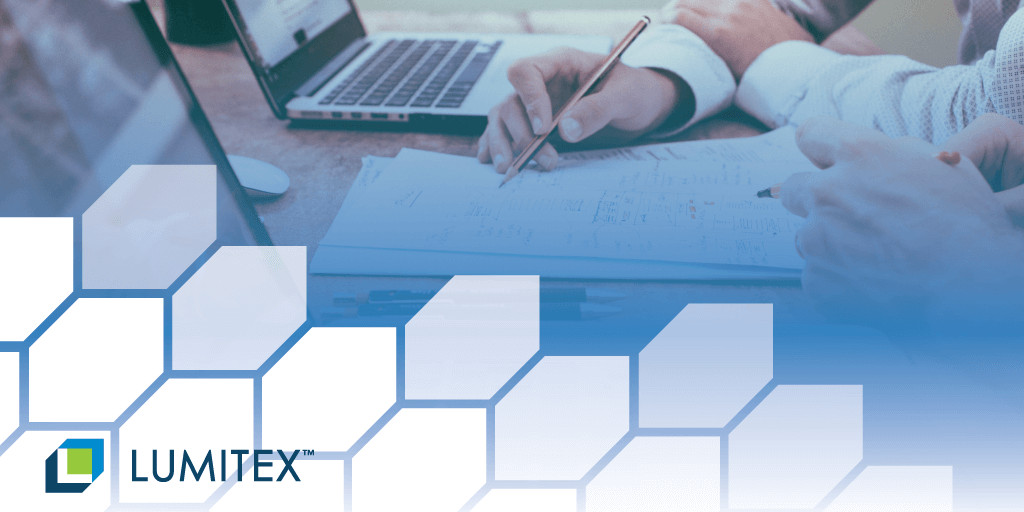
This is the most thorough guide to understanding product development and all its intricacies.
The core of any product development stems from: Define - Build -Test. Or Learn - Build - Measure. Operative word = Build.
Andrew Maynard, an architect based in Australia said it best, "Product development will always outstrip our understanding of risk, but there is a lot we can do to narrow that gap".
What are product development strategies and processes?
From an engineer’s perspective, product development strategy is the process of bringing a new product from concept through distribution. Careful consideration of the product requirements up front will reduce the delays and redesign costs later. The process begins with considering your overall project.
- Discover - Understand your goals and challenges
- Feasibility - Explore your options and identify if it adds value to your project
- Design - Choose the most promising solution for your project and start the design phase
- Prototype & Testing - Develop a functional prototype of the design to accomplish your goals. Test and evaluate
- Production - Develop manufacturing processes
In this new guide you'll learn about product development, idea screening, prototyping, business analysis and market strategy. Each step works in concert with the other as they relate to your overall product development strategy.
Contents
Chapter 1: What is Product Development?
Chapter 2: Product/Idea Screening (hint: craft buyer personas)
Chapter 3: Concept & Testing - Prototyping
Chapter 4: Business Analysis and Market Strategy
Chapter 5: Test Marketing
Chapter 6: It's a Wrap...Launch Time
Bonus Content: Download our Product Development Strategy Guide as PDF.
Get the PDF version to save to your desktop and read it when it's convenient for you.
(No email required):
Chapter 1
What is Product Development
In business and engineering, new product development (NPD) covers the complete process of bringing a new product to market. There are key steps in any new product evolution.
studyMarketing.org wrote an incredible article on the 12 Steps for New Product Development. Product development converts an idea into a physical form and identifies a basic marketing strategy.
The key steps range from:
1. Idea Generation - a continuous, systematic search for new product opportunities.
2. Product Screening - poor, unsuitable ideas weeded out.
3. Concept Testing - presents the consumer with a proposed product and measures attitudes and intentions at an early stage.
4. Business & Financial Analysis - detailed version of the product screening stage.
5. Product Development - converts product idea to physical form.
6. Test Marketing - observe performance under proposed marketing plan.
7. Commercialization - introduce product to its full target market. Start of the product life cycle.
Building a product that your customers will buy because they love it is the difference between the billion dollar company or the bankrupt company.
It all starts with Ideation- "the creative process of generating, developing , and communicating new ideas, where an idea is understood as a basic element of thought that can be either visual, concrete, or abstract."
Earlier this year, Bill Donlus, wrote an article for Huffington Post. He refers to Ideation as a reinvention of traditional brainstorming.
"It is a technique that involves both the left and right sides of the brain to allow breakthroughs from entrenched habits of thought and persistent difficult problems. It also helps participants avoid the circular thinking of channeling ideas along a constrained path that often occurs when individuals brainstorm together."
Chapter 2
Product/Idea Screening
"Specific screening criteria need to be set for this stage, looking at ROI, affordability and market potential. These questions need to be considered carefully, to avoid product failure after considerable investment down the line."
During screening the company evaluates whether to dedicate further resources to the development of a product at various stage gates.
Key Questions a Company Must Consider in Development:
- Is there a potential market for the product?
- Will the product meet the demands of their consumers?
- Can the product be profitable?
Part of the ideation and screening process is to clearly define a problem and end with a proof-of-concept prototype.
Bolt walks you through how they conduct their problem research with developing buyer personas. "Spending more time here will ensure founders lay a strong foundation for the rest of product development."
They go on to discuss understanding your problem space first with customer development interviews. In Bolt's article, they include key takeaways on handling conversations to build your customer personas; which are semi-fictional representations of your ideal customers.
Building your buyer personas will help you gain insight into your customer's needs and buying decisions.
David Meerman Scott, International bestselling author of The New Rules of Marketing & PR, adds "organizations that take the time to understand their buyer personas escape the trap of selling to the wrong people at the wrong time."
Do you think gaining this insight will transform your business?
Personas will help every area of business -- marketing, sales, product and services. Here's some great resources to help you craft the perfect buyer persona:
The Complete Guide to Developing And Using Buyer Personas
How to Create Detailed Buyer Personas for Your Business [Free Persona Template]
The 5 Best Guides for Creating Customer Personas
Let's move from proof of concept prototype to prototyping...
Chapter 3
Concept & Testing - Prototyping
First let's address:
What's the difference between proof of concept (POC) and prototyping?
The first shows a product can be done. The second shows how it will be done. The prototyping methodology allows you to design a working prototype or early sample of what's to come.
This subject is so comprehensive, we recently dedicated an entire article on: Prototyping Methododology: Steps on How to Use It Correctly. If you don't have time to read the full article you can download a PDF version and save it to your computer for reference.
In a nutshell, there are different models you can use. We reviewed the waterfall, spiral, lean startup methodology and scrum.
The latest trends brought us to discover MVP (minimum viable product), proposed by Eric Ries. His thoughts were to develop products based on validated learning and getting customer feedback often.
Scrum was another method for project management through the product development phase. Its core values are courage, focus, commitment, respect and openness. It improves teamwork, communications and speed.
Additional resources for prototyping:
4 Ways Prototyping Can Help You Take Risks
Why Prototyping is an Essential Marketing Strategy for a Business
What are the best prototyping tools? (2023 top 10 compared)
Rapid Prototyping: The Best Route to Happy Customers
Chapter 4
Business Analysis and Strategy
The business analysis phase of your product development cycle will help you determine the cost of production, selling price and potential sales volume.
Production Cost - Pricing - Sales Volume by Definition
Cost of production: Production cost refers to the cost incurred by a business when manufacturing a good or providing a service. Production costs include a variety of expenses including, but not limited to, labor, raw materials, consumable manufacturing supplies and general overhead.
Pricing: In many industries, the cost of production may be very low compared to selling price. The cost of production is often 5% to 10% of the selling price.
Sales Volume: Sales volume equals the quantity of items a business sells during a given period, such as a year or fiscal quarter. Sales -- or sales revenue -- equals the dollar amount a company makes during the period under review.
Difference Between the Sales & Sales Volume
At some point, you've probably heard of the 4 P's of Marketing. This stage of the game is where they come to fruition.
- Product
- Price
- Promotion
- Placement
"The famous ‘4Ps of marketing’ are revered by some members of the profession, and scoffed at by others. Some see these fundamental tenets of classical marketing theory – referring to product, price, promotion and place – as the foundations upon which all sound marketing strategies are built. For others, they represent dusty old concepts that have failed to update to the modern, digital age."
Great article to read by Marketing Week on the big debate: Are the '4Ps of marketing' still relevant?
Matt Barwell, CMO at Britvic, comments "It is increasingly hard to separate price and promotion. It is more appropriate to talk about value.
Would you agree?
He goes on to say, "It comes back to how you deliver value to consumers through product, through experience and through a combination of price and promotion."
With technology evolving at a rapid pace, you still can't forget the basics of marketing with the 4P's. They offer a strong determination/backbone to a marketing strategy.
Chapter 5
Test Marketing
Test marketing is the time to test your product in action.
There are 3 strategic questions when it comes to test marketing you should ask yourself:
- When should I conduct a test market?
- What can I learn from a test market?
- How should I use information from a test market?
From Harvard Business Review:
"Test markets should be conducted to learn about the productivity of the marketing plan in terms of both consumer and trade response, to learn ways to improve the productivity of the plan, and to avoid potential disasters."
Test Marketing in New Product Development
"Test marketing is the stage where all the variables in the marketing plan, as well as the product characteristics, are tested in a real - world setting. Test marketing is the final stage before commercialization, and is where all the elements of the marketing plan are tested."
There is no doubt after all test results are in, adjustments in your products will still be made.
This will eventually lead into the stages of the product life cycle, which entails, introduction, growth, maturity, and decline.
Stages in the Product Life Cycle

Image credit: By Mwpnl (talk) 21:09, 16 October 2008 (UTC) ("Essentials of Marketing" - Perreault et al. 2008) [GFDL (http://www.gnu.org/copyleft/fdl.html) or CC BY-SA 3.0 (https://creativecommons.org/licenses/by-sa/3.0)], via Wikimedia Commons
Chapter 6
It's a Wrap...Launch Time
Just like every other phase, your product launch will go through stages. Your actual launch is the time your consumers first receive access to your product.
Want to know some secrets on how to launch your new product?
6 Secrets of a Winning Product Launch
A successful launch begins with great timing. You might feel a sense of urgency to introduce your service, but rushing could spell disaster.
6 Steps to a Successful Product Launch
Launching something new isn’t what it used to be; innovative tactics are required to cut through the noise.
Here are 10 steps for getting the attention you deserve:
10 Steps for Successfully Launching a New Product or Service
Let's face it...
Not all product launches are successful.
Maybe you heard of a few...
Apple's Disappearing Headphone Jack or Samsung Galaxy Note 7 Won't Stop Burning.
Here's a few more: 12 of the Biggest Tech Fails from 2016
Can you guess the others?
Not every company or entrepreneur is going to hit it out of the ballpark. But there are ways to bridge the gap.
Conclusion
Phew!
I told you this was going to be a comprehensive guide. And I didn't even go through patents and manufacturing. (maybe you need to watch Shark Tank for that)
Seriously, a word of caution here.
Since the American Invents Act, the U.S. has switched from a “first-to-invent” (FTI) to a“first-to-file” (FTF) patent system. This means that the right to patent an invention goes to the first person to file the application as opposed to the first person to create the product.
So protect yourself.
By having a working "prototype", it is easier to see a patent attorney and discover which aspects are patentable.
If you find your self here because you need to build a product "proof of concept" that requires bright light, Lumitex can help. Or maybe you already have a prototype but you're interested in production options.
Either way...
Lumitex has affordable lighting applications/solutions that provide bright uniform light for any of your projects.
Now it's your turn.
I hope you enjoyed the guide to product development strategy.
What did you think of the guide?
Or maybe you have a question.
Either way, let me know by leaving a quick comment below.




Comments